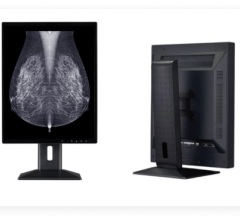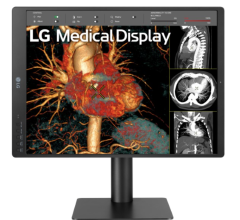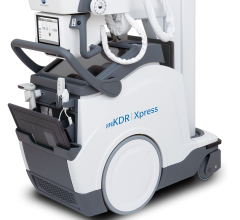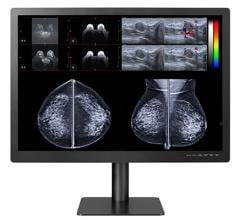An important change is occurring in the practice of screening mammography. The availability and acceptance of full-field digital mammography is gaining momentum and with it, the practice of using soft copy for interpretation.
Initially, CRT (cathode ray tube) monitors were the only practical choice for display of digital mammography images. This may seem surprising given the wide range of acceptance of LCDs (liquid crystal displays) for other modalities, but digital mammography poses unique display challenges. Now flat panel LCD development has progressed to a degree that physician comfort with the use of this technology is becoming more prevalent. The transition from CRT to LCD technology has not been a trivial decision for many radiologists.
CRT vs. LCD – The Early Debate
CRT design was stretched to the limit to create a 5 megapixel (MP) display with high contrast, which was achieved by taking the design of the electron gun to its practical limits. The disadvantages in taking the CRT to its design limits included low reliability, difficulty in calibration and severe challenges in design of look-up tables for low-subject contrast imaging needed for breast tissue.
Furthermore, CRT setup had to be customized for every installation because of the effect of the Earth’s magnetic fields and other source of electromagnetic radiation on the electron beam. This further complicated establishing and maintaining image quality. However, when the setup was optimized, few could argue with the quality of imaging possible with a CRT monitor.
Initially, LCDs were not well accepted by radiologists for digital mammography. The doctors had become accustomed to the image tint and contrast inherent with CRT monitors. Furthermore, little work had been done to customize look-up tables and gamma correction with LCDs for this specialized application.
While LCDs are capable of higher maximum luminance, blacks are not as black because the liquid crystals act as a shutter to prevent light from reaching the eye. These shutters do not completely block all light. Also, look-up tables had to be developed to optimize contrast for soft tissue imaging and for visibility of the skin line.
Early LCD displays also exhibited significant drop off in luminance with off-angle viewing. Improvements in liquid crystal technology have addressed and corrected this concern. Though manufacturers typically claim viewing angles of 170 degrees, the viewing angle in which DICOM compliance and acceptable contrast is maintained is, in fact, substantially less than 170 degrees.
Physicists and radiologists are finding that these obstacles have been overcome. The high brightness possible with LCDs makes the more important contrast ratio very acceptable in more varied ambient lighting conditions. LCDs are less subject to drift and other image artifacts.
Questions for Upgrades
When a site is considering upgrading from CRT to LCD, adding digital mammography reading to a PACS or purchasing a new digital mammography system, there are a number of questions to pose prior to product demonstration and equipment evaluation.
• Does the display have FDA 510(k) clearance to market the device for use with digital mammography?
• Does the display have a Quality Control Manual or QC tests for displays defined as part of a system QC manual? (Ask for a copy of the manual.)
• Is software available to automate the tasks defined in the QC manual?
• Is the display qualified by the PACS or FFDM vendor for use with the intended workstation?
• What graphics card compatibility is recommended for the display, workstation and graphics card combination?
• What warranty is included with the display? Is a luminance warranty included?
• Is the display capable of passing all tests defined by the AAPM TG18 Assessment of Display Performance for Medical Imaging Systems?
Most major manufacturers have achieved 510(k) clearance for 5MP LCD for use with digital mammography. This is a good starting point and leads naturally to the question about a quality control manual. The QC manual is an FDA requirement for digital mammography as part of meeting the Mammography Quality Standards Act of 1992 (MQSA) regulations. Usually, it is provided with the digital mammography system, but if the displays are part of a PACS or an upgrade, it would make sense to ask about the QC manual.
Like many of the requirements associated with MQSA, display QC could potentially be time consuming. It would be a good idea to understand the magnitude of the record-keeping effort and what assistance is available through QC software provided by the display manufacturer. A further confidence builder is proof of qualification of the display by the PACS or digital mammography provider.
Graphics cards can be an important consideration, particularly if upgrading from CRT to LCD. Some displays and digital mammography systems are locked in to a particular graphics card/display combination. Other displays are compatible with consumer off-the-shelf graphics cards. Either approach can produce totally acceptable performance provided that the combination is qualified by either the digital mammography or PACS provider.
Display warranties can vary significantly. Manufacturers typically offer anywhere from one to three year warranties. Some manufacturers also include a guarantee of a stabilized luminance for a specific period of time. This information combined with the information about graphics cards, can be very useful for determining the total cost of ownership when choosing displays.
The American Association of Physicists in Medicine (AAPM) established a task force to define methods for assessing display quality. This may be the most comprehensive documentation available for this topic. Your medical physicist should be aware of this report and be capable of performing the recommended tests.
Using these questions as a starting point should make it possible to quickly choose display options. Reviewing the QC manual can give a quick insight into the effort required to maintain displays and also any potential quirks associated with that particular display manufacturer.
Equipment Evaluation Questions
Questions can be broken down into three broad categories:
1. Display test pattern evaluation
2. Phantom image evaluation
3. Demonstration of QC software
Even if it is not practical to arrange for an equipment demonstration, these questions could be applied at acceptance testing, as well.
Display test patterns can be used to evaluate a number of critical display parameters. These test patterns should be included as part of the display quality control tool. Displays should be evaluated for pixels stuck in the on or off position. These can be identified by viewing a test pattern with the screen set to maximum luminance and minimum luminance. Be aware that most manufacturers allow a limited number of pixel defects. Consult with your manufacturer to understand these specifications.
The AAPM TG18 QC test pattern is preferred over the SMPTE test pattern because of the inclusion of a continuous grayscale ramp. This grayscale ramp is important because it assures that the DICOM curve has been optimized to present a continuous smooth grayscale presentation. Both 8-bit and 10-bit displays will show this smooth ramp when properly calibrated and with proper graphics card setup. Also, the traditional five percent and 95 percent patches should be distinguishable. This is a minimum method to assure the displays are generally performing as expected.
This visual inspection can also be supplemented by use of QC software. Some manufacturers use a built in photometer to assess compliance of the display to the DICOM curve and other manufacturers make available an external photometer. In either case, the photometer can be used to measure luminance at discrete points and then calculate goodness of fit of the actual luminance to the DICOM curve.
Displays should also be checked for ghosting and image sticking. If a section of an active matrix is left in an activated constant state for an extended period of time, a memory effect will develop. A residual capacitance can develop that causes the pixels to become stuck in their active state. The so-called memory effect is said to develop when the liquid crystal loses its ability to fully return to its natural state (i.e., blocking light). While this is generally a rare problem, it is a simple visual evaluation to perform.
LCDs have reached a state of maturity acceptable for digital mammography. As LCD technology has improved and LCD tradeoffs have become better understood, the choice of LCD technology for digital mammography has become the preferred approach.
Feature | March 01, 2007 | Ken Crocker
Full-field digital mammography is paving the way for visual upgrades.paving the way for visual upgrades.
© Copyright Wainscot Media. All Rights Reserved.
Subscribe Now

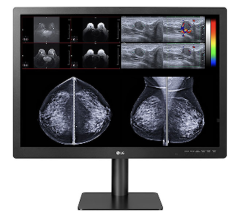
 March 12, 2024
March 12, 2024 
